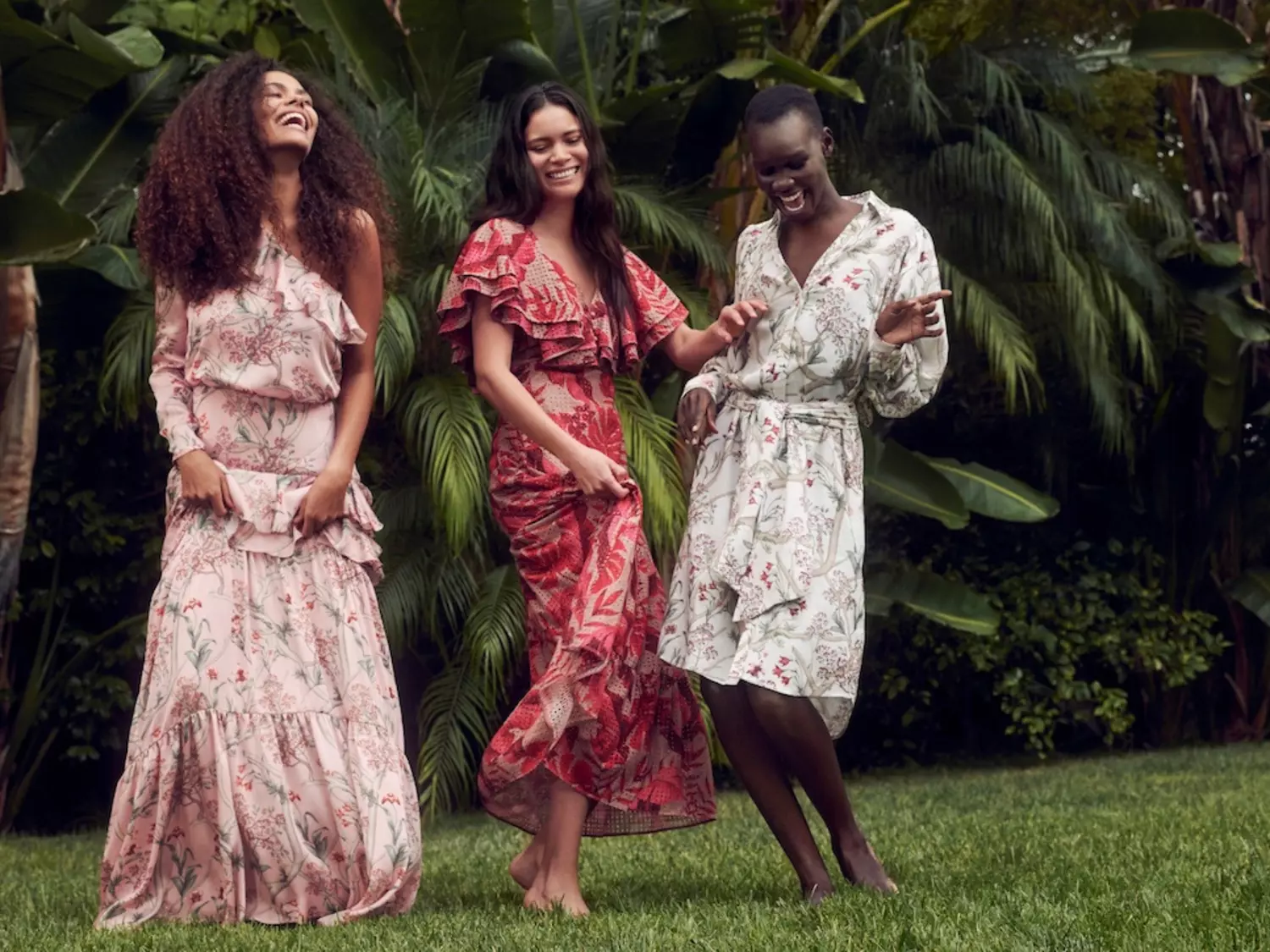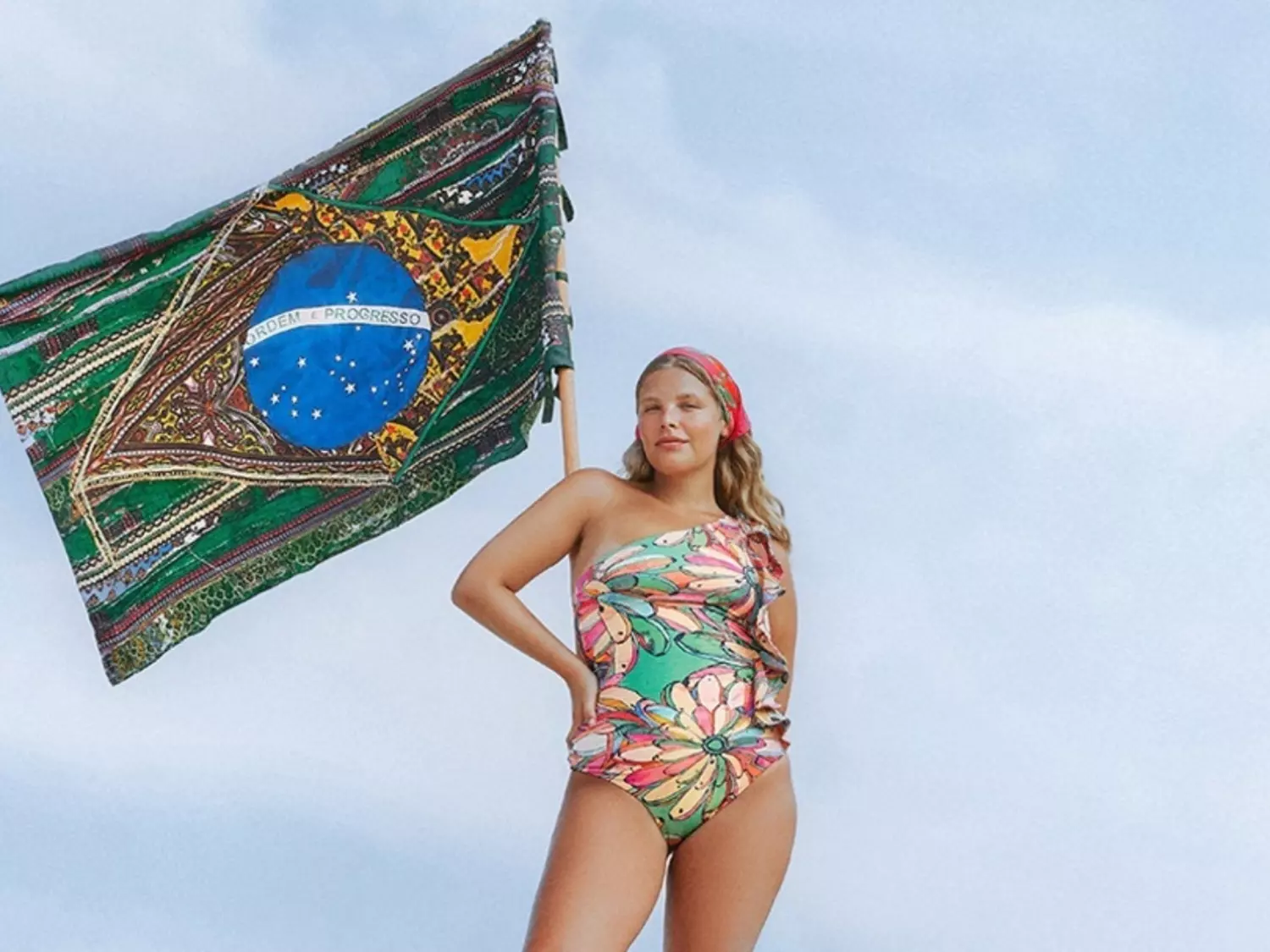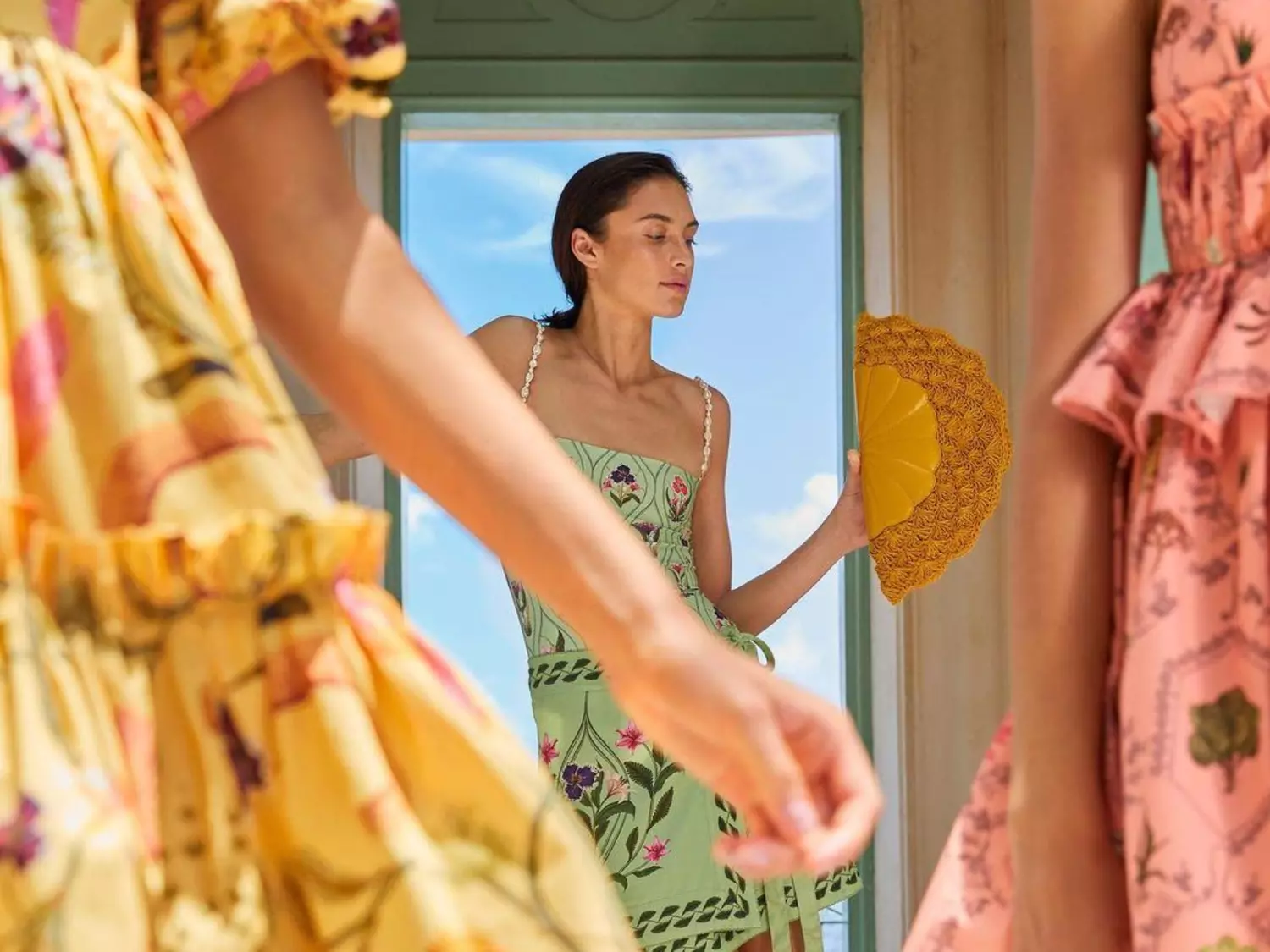

8 Inspiring Sustainable Fashion Brands in Latin America
Latin American fashion is also committed to protecting the planet by using natural fibers, local crafts and cleaner supply chains. These South and Central American brands reduce waste, improve traceability and pay their artisans fairly. Get inspired to shop wisely and support those who care for our land and culture.
Swipe to learn more.

Osklen, Brazil
A regional pioneer in responsible design, Osklen has made sustainability its focus for more than two decades, even though it was barely discussed in Latin American fashion. They researches and uses organic and recycled cotton, biodegradable polyamide, hemp, jute, and recycled PET to reduce its impact. Osklen also repurposes arapaima leather (an Amazonian fish consumed as food) and produces eco-friendly canvas. The result is a line of durable pieces with an urban aesthetic.
Photography: Osklen

Farm Rio, Brazil
Since 1997, the brand has embraced a tropical aesthetic with sustained environmental action. It integrates responsible materials such as viscose, organic cotton, recycled polyester/PET, and other lower-impact fibers into its collections. Its 1,000 Trees a Day, Every Day program restores Brazilian biomes. It also publishes sustainability and traceability progress on its website. Its message is clear — dressing colorfully can go hand in hand with nature conservation.
Photography: Farm Rio

Holy Water, Colombia
A Colombian brand with over two decades of experience in swimwear and resort wear made by local artisans and hand-embroidered. Since its inception, it has reused surplus textiles and today incorporates lines with recycled materials and lower-impact processes. It upholds social responsibility and traceability policies; the majority of its workforce is women. Agua Bendita combines design, craftsmanship and care for Latin America.
Photography: Agua by Agua Bendita

Ortiz, Colombia
From Cali, Johanna Ortiz has been elevating luxury with craftsmanship and closeness for over a decade. She works with long-lasting natural fibers (silk, linen, cotton) and reimagined textile surpluses. She focuses on small batches, traceability, and expert hands in embroidery, pleating and draping. She reduces waste without losing sweep or movement: a design that lasts and can be easily repaired.
Photography: Johanna Ortiz x H&M

AYNI, Peru
Since 2009, Ayni has been weaving responsible luxury from Lima alongside Andean cooperatives. She uses baby alpaca and Pima cotton, with plant-based dyes and production by done Peruvian artisans. She focuses on a local and traceable chain from fiber to product development, all in Peru for a smaller footprint. She prioritizes pre-measured batches, hand-processed processes and fair conditions that sustain the craft and community. The result is a collection of durable and contemporary pieces that honor the land and tradition.
Photography: Ayni

KUNA, Peru
Andean alpaca and vicuña specialists has expertise that permeates from the fiber to the finished garment. In partnership with high-Andean breeders, they promote research and conservation, prioritizing animal welfare and responsible management. Their palette is based on royal, baby, and noble alpaca blends, allowing for less dyeing and longer-lasting natural colors. The garments have timeless design and durable garments that respect the Andean landscape, wildlife, and craftsmanship.
Photography: KUNA

Caralarga, Mexico
Since 2014, this textile design studio has been transforming waste into timeless design. Raw cotton threads and textile waste are hand-crafted into jewelry and home furnishings alongside local artisans. Its Recuperado line repurposes surplus raw cotton from large formats for new tapestries and objects, closing the cycle. Its philosophy is to preserve the essence of the material and work in a short supply chain within its own workshop.
Photography: Caralarga

Global Market, Guatemala
Global Market is a social enterprise that creates handbags and accessories alongside indigenous communities with contemporary design and Mayan roots. It promotes fair incomes and female leadership through ongoing training. It works with natural fibers and traditional techniques, integrating surplus textiles whenever possible to reduce waste. Each collection unites craft and opportunity to create lasting pieces that sustain homes, preserve technique, and connect culture with new markets.
Photography: Global Market